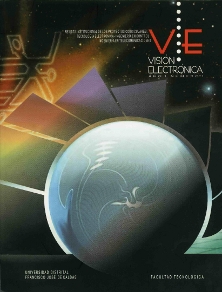DOI:
https://doi.org/10.14483/22484728.18359Publicado:
2018-05-13Número:
Vol. 1 Núm. 1 (2018): Edición especialSección:
Visión de CasoPanel fotovoltaico de 10 W diseñado usando Comsol multiphysics
Photovoltaic panel of 10 W designed using Comsol multiphysics
Palabras clave:
Photovoltaic panel, Alternative energy, Modeling, COMSOL Multiphysics (en).Palabras clave:
Panel fotovoltaico, Energías alternativas, Modelamiento, COMSOL Multiphysics (es).Descargas
Resumen (es)
En la actualidad, la energía solar constituye la segunda fuente de energía renovable de mayor aprovechamiento en el mundo, por lo que se ha progresado en la eficiencia y reducción de área de impacto de paneles solares. No obstante, aun, en comparación con otras fuentes de energía eléctrica, su costo de adquisición sigue elevado en implementaciones de alta potencia. En el presente artículo, mediante el software COMSOL Multiphysics -utilizando elementos finitos-, se simula y analiza una de las celdas de un panel solar fotovoltaico de 10(W). Se realizan pruebas en periodos distintos de tiempo y con intensidad de radiación solar diferentes, identificándose curvas características adquiridas de corriente vs tensión, y potencia vs tensión. Se evalúan, por comparación, los datos arrojados con respecto a los dados por el fabricante encontrándose plausibles dado un error relativo admisible de 1,428% y 1,639%, respectivamente. Como el comportamiento del panel solar depende en gran parte de la radiación solar proyectada en él, y de la temperatura ambiente, se evidencia que a mayor radiación solar sobre el panel la corriente demandada capaz de otorgar aumenta.
Resumen (en)
At present, solar energy is the second largest source of renewable energy in the world, and there is evidence of progress in the construction of solar panels to increase their efficiency and reduction of impact area; but, in comparison with other sources of electric power, its acquisition cost has very high costs in high-power implementations. In this article, using COMSOL Multiphysics software – by finite elements-, it’s simulating and analyzing one cells in 10(W) photovoltaic solar panel. Tests are carried out at different days with different solar radiation intensity are made, identifying two characteristic curves acquired from current vs voltage, and power vs voltage. It´s evaluated, by comparison, the data achieved respect to the manufacturer and a relative error of 1,428% and 1,639% respectively is identified, which is an approved error for specifications by the manufacturer. The behavior of the solar panel depends largely on the solar radiation projected on it as well as the ambient temperature, evidencing that the more solar radiation on the panel the demanded current capable of granting increased.
Referencias
UPME and BID, Integración de las energías renovables no convencionales en Colombia. 2015.
I. E. Agency, “A Snapshot of Global PV 1992-2013,” Rep. IEA-PVPS T1-242014, pp. 1–16, 2014.
I. UPME, “Atlas de Radiación Solar de Colombia,” 2005. [Online]. Available: http://www.upme.gov.co/Atlas_Radiacion.htm.
E. Duque, A. Isaza, P. Ortiz, S. Chica, A. Lujan, and J. Molina, “Urban sets innovation: Design of a solar tree PV system for charging mobile devices in Medellin — Colombia,” in 2017 IEEE 6th International Conference on Renewable Energy Research and Applications (ICRERA), 2017, pp. 495–498.
Congreso de la republica de Colombia, “Ley 1715 de 2014.” 2014.
J. Alberto and V. Marín, “Invierta y Gane con Energía,” 2014.
J. A. Hernandez, C. A. Arredondo, and D. J. Rodriguez, “Procedures to Make Projects About Renewable Energy Generation Connected to the Grid in Colombia,” in 2017 IEEE 44th Photovoltaic Specialist Conference (PVSC), 2017, pp. 2031–2034.
IDEAM, “Visor Atlas Radiacion.” 2017.
A. Fahrenbruch and R. Bube, Fundamentals Of Solar Cells: Photovoltaic Solar Energy Conversion. Elsevier Science, 2012.
T. Markvart and K. Bogus, Solar Electricity. Wiley, 2000.
GStriatum, “La Diferencia Entre Célula, Módulo, Arreglo Y Sistema Solar.” 2010.
T. D. Corcobado and G. C. Rubio, Instalaciones solares fotovoltaicas, grado medio: CD profesor. McGraw Hill, 2010.
Fabricante, “Ficha tecnica PANELES SOLARES.” 2017.
CEMAER, “Paneles Solares.” 2017.
Cómo citar
APA
ACM
ACS
ABNT
Chicago
Harvard
IEEE
MLA
Turabian
Vancouver
Descargar cita
Licencia
Derechos de autor 2018 Visión electrónica

Esta obra está bajo una licencia internacional Creative Commons Atribución-NoComercial 4.0.
.png)
atribución- no comercial 4.0 International






.jpg)





